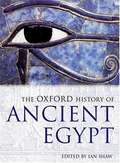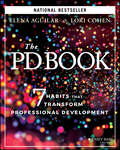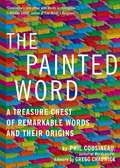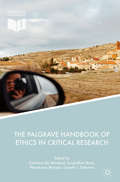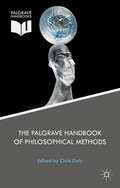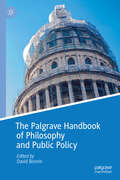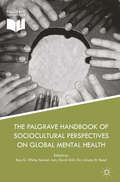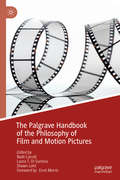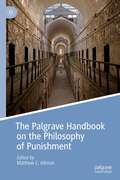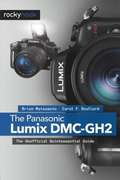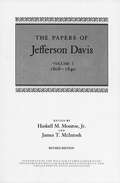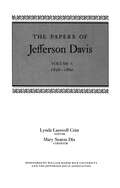- Table View
- List View
The Oxford Guide to the United States Government
by John J. Patrick Richard M. Pious Donald A. RitchieThe Oxford Guide to the United States Government is the ultimate resource for authoritative information on the U.S. Presidency, Congress, and Supreme Court, and other federal government agencies. Written by three top scholars, its pages brim with the key figures, events, and structures that have animated U.S. government for more than 200 years. In addition to coverage of the 2000 Presidential election, this Guide features biographies of all the Presidents, Vice Presidents, and Supreme Court justices, as well as notable members of Congress, including current leadership; historical commentary on past elections, major Presidential decisions, international and domestic programs, and the key advisors and agencies of the executive branch; in-depth analysis of Congressional leadership and committees, agencies and staff, and historic legislation; and detailed discussions of 100 landmark Supreme Court cases and the major issues facing the Court today. In addition to entries that define legal terms and phrases and others that elaborate on the wide array of government traditions, this invaluable book includes extensive back matter, including tables of Presidential election results; lists of Presidents, Vice Presidents, Congresses, and Supreme Court Justices with dates of service; lists of Presidential museums, libraries, and historic sites; relevant web sites; and information on visiting the White House, the Capitol, and the Supreme Court building. A one-stop, comprehensive guide that will assist students, educators, and anyone curious about the inner workings of government, The Oxford Guide to the United States Government will be a valued addition to any home library.
The Oxford History of Ancient Egypt
by Ian ShawThe Oxford Illustrated History of Ancient Egypt is the only up-to-date, single-volume history of ancient Egypt available in English. The accessible essays and attractive illustrations portray the emergence and development of the distinctive civilization of the ancient Egyptians, from their prehistoric origins to their incorporation into the Roman Empire, covering the period from c. 700,000 BC AD 311. The authors each experts working at the cutting edge of their particular fields outline the principal sequence of political events, including detailed examinations of the three so-called 'intermediate periods’ which were previously regarded as 'dark ages' and are only now beginning to be better understood. Against the backdrop of the rise and fall of ruling dynasties, this Oxford Illustrated History also examines cultural and social patterns, including stylistic developments in art and literature. The pace of change in such aspects of Egyptian culture as monumental architecture, funerary beliefs, and ethnicity was not necessarily tied to the rate of political change. Each of the authors of this history has therefore set out to elucidate, in both words and pictures, the underlying patterns of social and political change and to describe the changing face of ancient Egypt, from the biographical details of individuals to the social and economic factors that shaped the lives of the population as awhile.
The Oxy-Acetylene Handbook (Third Edition): A Manual on Oxy-Acetylene Welding and Cutting Procedures
by UNION CARBIDE CORPORATIONTHE OXY-ACETYLENE HANDBOOK: A Manual on Oxy-Acetylene Welding and Cutting Procedures
The PD Book: 7 Habits that Transform Professional Development
by Elena Aguilar Lori CohenDevelop transformational professional development programs that build and sustain your school community In The PD Book, bestselling author Elena Aguilar and co-author Lori Cohen offer seven habits—and a wealth of practical tools—that help you transform professional development. In this book, you'll learn how to inspire adult learners, the importance of having clear purpose, and how to navigate power dynamics in a group. You'll also learn a new way to plan PD that allows you to attend to details and be a responsive facilitator. The dozens of tips and tricks, anecdotes and research, and tools and resources will enable you to create the optimal conditions for learning. You'll also: Craft effective outcomes for your adult students and design an agenda that aligns with adult learning principles Use storytelling as a tool for effective workshops and trainings Plan backwards from evaluations and outcomes to create powerful and lasting educational experiences Ideal for educational leaders and administrators, professional development facilitators, coaches, and positional leaders in both K-12 and higher education, The PD Book is an incisive resource offering concrete strategies for educators at all levels.
The PDR Pocket Guide to Prescription Drugs
by Pdr StaffBased on the Physicians' Desk Reference, the most highly trusted drug information references for more than 66 years, The PDR Pocket Guide to Prescription Drugs is an A to Z listing of more than 1,000 brand-name and generic drugs, all based on FDA-approved information. The guide answers frequently asked questions such as: Why was this drug prescribed for me? What are the benefits and risks of taking this drug? Are there any side effects I should watch for? What questions should I ask my doctor about this prescription?
The Painted Word
by Phil CousineauTo untangle the knot of interlocking meanings of these painted words, logophile and mythologist Phil Cousineau begins each fascinating word entry with his own brief definition. He then fills it in with a tint of etymology and a smattering of quotes that show how the word is used, ending with a list of companion words. The words themselves range from commonplace - like biscuit, a twice-baked cake for Roman soldiers - to loanwords including chaparral, from the Basque shepherds who came to the American West; words from myths, such as hector; metamorphosis words, like silly, which evolved holy to goofy in a mere thousand years; and words well worthy of revival, such as carrytale, a wandering storyteller. Whether old-fangled or brand new, all the words included in The Painted Word possess an ineffable quality that makes them luminous.
The Painted Word: A Treasure Chest of Remarkable Words and Their Origins
by Phil CousineauTo untangle the knot of interlocking meanings of these painted words, logophile and mythologist Phil Cousineau begins each fascinating word entry with his own brief definition. He then fills it in with a tint of etymology and a smattering of quotes that show how the word is used, ending with a list of companion words. The words themselves range from commonplace -- like biscuit, a twice-baked cake for Roman soldiers -- to loanwords including chaparral, from the Basque shepherds who came to the American West; words from myths, such as hector; metamorphosis words, like silly, which evolved holy to goofy in a mere thousand years; and words well worthy of revival, such as carrytale, a wandering storyteller. Whether old-fangled or brand new, all the words included in The Painted Word possess an ineffable quality that makes them luminous.
The Palgrave Handbook of Ethics in Critical Research
by Catriona Ida Macleod Jacqueline Marx Phindezwa Mnyaka Gareth J. TreharneThis handbook highlights the growing tensions surrounding the current dominant ethical clearance model which is increasingly being questioned, particularly in critical research. It draws on stories from the field in critical research conducted in a range of contexts and countries and on an array of topics. The authors involved in this collection encountered dilemmas, contradictions and surprises that brought about a change in their understanding of ethics. Throughout the book they discuss how ethics is an ongoing and situated struggle that requires researchers, at times, to traverse traditional ethical imperatives. Four sections lead readers through the complexities of grounded ethical practice: encountering systems, including Ethics Committees and institutions; blurring boundaries within research; the politics of voice, anonymity and confidentiality; and power relations in researching ‘down’, ‘up’, and ‘alongside’. This handbook is a resource for social science researchers using critical methodologies across a range of disciplines, as well as for students and teachers of ethics, in navigating the quandaries of ‘doing good’ while doing good research.
The Palgrave Handbook of Philosophical Methods (Palgrave Handbooks)
by Chris DalyThis Handbook contains twenty-six original and substantive papers examining a wide selection of philosophical methods. Drawing upon an international range of leading contributors, it will help shape future debates about how philosophy should be done. The papers will be of particular interest to researchers and high-level undergraduates.
The Palgrave Handbook of Philosophy and Public Policy
by David BooninThis book brings together a large and diverse collection of philosophical papers addressing a wide variety of public policy issues. Topics covered range from long-standing subjects of debate such as abortion, punishment, and freedom of expression, to more recent controversies such as those over gene editing, military drones, and statues honoring Confederate soldiers. Part I focuses on the criminal justice system, including issues that arise before, during, and after criminal trials. Part II covers matters of national defense and sovereignty, including chapters on military ethics, terrorism, and immigration. Part III, which explores political participation, manipulation, and standing, includes discussions of issues involving voting rights, the use of nudges, and claims of equal status. Part IV covers a variety of issues involving freedom of speech and expression. Part V deals with questions of justice and inequality. Part VI considers topics involving bioethics and biotechnology. Part VII is devoted to beginning of life issues, such as cloning and surrogacy, and end of life issues, such as assisted suicide and organ procurement. Part VIII navigates emerging environmental issues, including treatments of the urban environment and extraterrestrial environments.
The Palgrave Handbook of Sociocultural Perspectives on Global Mental Health
by Ross G. White Sumeet Jain David M.R. Orr Ursula M. ReadThis handbook incisively explores challenges and opportunities that exist in efforts aimed at addressing inequities in mental health provision across the globe. Drawing on various disciplines across the humanities, psychology, and social sciences it charts the emergence of Global Mental Health as a field of study. It critically reflects on efforts and interventions being made to globalize mental health policies, and discusses key themes relevant for understanding and supporting the mental health needs of people living in diverse socio-economical and cultural environments. Over three rich sections, the handbook critically engages with Global Mental Health discourses. To help guide future efforts to support mental health and wellbeing in different parts of the world, the third section of the handbook consists of case studies of innovative mental health policy and practice, which are presented from a variety of different perspectives. <P><P> This seminal handbook will appeal to a transnational community of post-graduate students, academics and practitioners, from global health to transcultural psychiatry and medical anthropology. It will be also of interest to researchers and clinical practitioners, policy makers and non-governmental organisations involved in cross-cultural mental health work.
The Palgrave Handbook of Survey Research
by Jon A. Krosnick David L. VannetteThis handbook is a comprehensive reference guide for researchers, funding agencies and organizations engaged in survey research. Drawing on research from a world-class team of experts, this collection addresses the challenges facing survey-based data collection today as well as the potential opportunities presented by new approaches to survey research, including in the development of policy. It examines innovations in survey methodology and how survey scholars and practitioners should think about survey data in the context of the explosion of new digital sources of data. The Handbook is divided into four key sections: the challenges faced in conventional survey research; opportunities to expand data collection; methods of linking survey data with external sources; and, improving research transparency and data dissemination, with a focus on data curation, evaluating the usability of survey project websites, and the credibility of survey-based social science. Chapter 23 of this book is open access under a CC BY 4. 0 license at link. springer. com.
The Palgrave Handbook of the Philosophy of Film and Motion Pictures
by Noël Carroll Laura T. Di Summa Shawn LohtThis handbook brings together essays in the philosophy of film and motion pictures from authorities across the spectrum. It boasts contributions from philosophers and film theorists alike, with many essays employing pluralist approaches to this interdisciplinary subject. Core areas treated include film ontology, film structure, psychology, authorship, narrative, and viewer emotion. Emerging areas of interest, including virtual reality, video games, and nonfictional and autobiographical film also have dedicated chapters. Other areas of focus include the film medium’s intersection with contemporary social issues, film’s kinship to other art forms, and the influence of historically seminal schools of thought in the philosophy of film. Of emphasis in many of the essays is the relationship and overlap of analytic and continental perspectives in this subject.
The Palgrave Handbook on the Philosophy of Punishment (Palgrave Handbooks in the Philosophy of Law)
by Matthew C. AltmanThis Handbook provides a comprehensive survey of major topics in the philosophy of punishment from many of the field’s leading scholars. Key featuresPresents a history of punishment theory from ancient times to the present.Evaluates the main proposed justifications of punishment, including retributivism, general and specific deterrence theories, mixed theories, expressivism, societal-defense theory, fair play theory, rights forfeiture theory, and the public health-quarantine model.Discusses sentencing, proportionality, policing, prosecution, and the role punishment plays in the context of the state.Examines advances in neuroscience and debates about whether free will skepticism undermines the justifiability of punishment.Considers forgiveness, restorative justice, and calls to abolish punishment.Addresses pressing social issues such as mass incarceration, juvenile justice, punitive torture, the death penalty, and “cruel and unusual” punishment. · With its unmatched breadth and depth, this book is essential reading for scholars who want to keep abreast of the field and for advanced students wishing to explore the frontiers of the subject.
The Panasonic Lumix DMC-GH2
by Brian Matsumoto Carol F. RoullardThe Panasonic Lumix DMC-GH2: The Unofficial Quintessential Guide provides a wealth of information and professional insights for owners of this powerful HD camera. With its electronic viewfinder and interchangeable lenses, the GH2 is capable of not only recording professional-quality still images, but has the added ability to record HD video as well. The mirrorless design enhances the camera's versatility beyond that of most digital single lens reflex (DSLR) cameras. With the appropriate adapters, it can use virtually any manufacturer's manual focus, legacy lens. It is smaller than a typical DSLR in both size and weight, and retains automatic focusing while recording videos capability that is missing in many DSLR cameras. With the GH2, Panasonic has significantly expanded the video capabilities beyond those of previous models. Among the improvements is the ability to adjust the frame rate and shutter speed when filming video, giving users greater control over the movie-making process. In this guide, authors Brian Matsumoto and Carol F. Roullard explore and explain the features and capabilities of the GH2 camera in detail, as they cover everything from the basic features of the camera to numerous advanced photographic applications. The informative text is illustrated with example images throughout. Readers will learn how to: Control the most basic camera functions-focus and exposure Navigate the camera's menu system Achieve a range of artistic effects using various camera settings Use the camera's automated controls, and override those controls to obtain better exposure Use the GH2 in its video mode to obtain HD videos Post-process images and videos on a computer Expand the camera's use by mounting it on a telescope or microscope And much more...
The Pandemic of Argumentation (Argumentation Library #43)
by Serena Villata Steve Oswald Sara Greco Marcin LewińskiThis open access book addresses communicative aspects of the current COVID-19 pandemic as well as the epidemic of misinformation from the perspective of argumentation theory. Argumentation theory is uniquely placed to understand and account for the challenges of public reason as expressed through argumentative discourse. The book thus focuses on the extent to which the forms, norms and functions of public argumentation have changed in the face of the COVID-19 pandemic. This question is investigated along the three main research lines of the COST Action project CA 17132: European network for Argumentation and Public PoLicY analysis (APPLY): descriptive, normative, and prescriptive. The volume offers a broad range of contributions which treat argumentative phenomena that are directly related to the changes in public discourse in the wake of the outburst of COVID-19. The volume additionally places particular emphasis on expert argumentation, given (i) the importance expert discourse has had over the last two years, and (ii) the challenges that expert argumentation has faced in the public sphere as a result of scientific uncertainty and widespread misinformation. Contributions are divided into three groups, which (i) examine various features and aspects of public and institutional discourse about the COVID-19 pandemic, (ii) scrutinize the way health policies have been discussed, debated, attacked and defended in the public sphere, and (iii) consider a range of proposals meant to improve the quality of public discourse, and public deliberation in particular, in such a way that concrete proposals for argumentative literacy will be brought to light. Overall, this volume constitutes a timely inquiry into all things argumentative in pandemic discourse. This volume is of interest to a broad readership including philosophers, linguists, communication and legal scholars, and members of the wider public who seek to better understand the discourse surrounding communicative phenomena in times of crisis.COST (European Cooperation in Science and Technology) is a funding organisation for research and innovation networks. For more information: www.cost.eu
The Papermaker's Companion: The Ultimate Guide to Making and Using Handmade Paper
by Helen HiebertCraft your own colorful paper goods and personalized stationary. With clear, step-by-step instructions, Helen Heibert covers all aspects of the papermaking process — from growing and harvesting plants for a malleable paper pulp to embellishment techniques like dyeing, embossing, and laminating. With tips on building your own papermaking equipment, ideas for transforming junk mail into dazzlingly unique notecards, and much more, you’ll be inspired to let your creativity shine as you explore the endless possibilities of handcrafted papers.
The Papers of Jefferson Davis: 1808–1840 (The Papers of Jefferson Davis #1)
by Jefferson DavisMuch of Jefferson Davis' life and career has been obscured in controversy and misinterpretation. This full, carefully annotated edition will make it possible for scholars to reassess the man who served as President of the Confederacy and who in the aftermath of war became the symbolic leader of the South.For almost a decade a dedicated team of scholars has been collecting and documenting Davis' papers and correspondence for this multi-volume work. The first volume includes not only Davis' private and public correspondence but also the important letters and documents addressed to and concerning him. Two autobiographical accounts, a detailed genealogy of the Davis family, and a complete bibliography are also included.This volume covers Davis' early years in Mississippi and Kentucky, his career at West Point, his first military assignments, and his tragic marriage to Sarah Knox Taylor. Together, the letters and documents unfold a human story of the first thirty-two years of a long life that later became filled with turbulence and controversy.
The Papers of Jefferson Davis: 1849–1852 (The Papers of Jefferson Davis #4)
by Jefferson DavisMay Seaton Dix, Associate EditorRichard E. Beringer, Visiting CoeditorIn Volume 4 of The Papers of Jefferson Davis, which covers the years 1849 to 1852, Davis had clearly chosen politics ar his life's work. He relished in his role as Mississippi's senior senator and willingly assumed the responsibility of being a national spokesman for the South. This period also saw a number of events in Davis' personal life, notably the birth of his first child and the beginning of a long estrangement from his brother Joseph.In January, 1849, Davis signed the Southern Address, although he occasionally disagreed with the extreme positions of its author, John C. Calhoun. Outside the Senate, Davis supported the objectives of the Nashville Convention and, later, the idea of a southern congress. During the crisis of 1850 Davis spoke often on such key issues as the regulation of slavery in the territories, the extension of the Missouri Compromise line, the admission of California, the Texas-New Mexico boundary, the continuation of the slave trade in the District of Columbia, and the Fugitive Slave Act. In 1851 he proposed purchasing camels for military transportation and urged that a Pacific railroad route be considered in the definition of the Mexican boundary.As a loyal Democrat, Davis had supported Lewis Cass in 1848, but he was a conspicuous personal favorite of Zachary Taylor, the new Whig president and his former father-in-law. In 1850 Taylor reportedly intervened to prevent a duel between Illinois representative William H. Bissell and Davis, who was incensed by Bissell's remarks about the Mississippi regiment at Buena Vista. Soon after joining the Taylor family at the president's deathbed in July, 1850, Davis defended Taylor's Mexican War performance in well-publicized Senate speech. Between sessions in 1849 Davis canvassed Mississippi, addressing gatherings throughout the state in favor of congressional candidates. He warned of northern aggressions, yet urged the exhaustion of all means of peaceful resistance before secession be considered. When he returned home after the arduous 1850 session, he defended his course, denying charges that he was a disunionist.In February, 1850, Davis had been reelected to the Senate for a full six-year term, but in September, 1851, he resigned to accept the Sate Rights nomination for governor in opposition to Union nominee Henry Foote. Although illness precluded much active campaigning in the few weeks before the election, Davis substantially reduced the Union lead and lost by a narrow margin. A private citizen for the first time since 1845, Davis continued his involvement in politics. Despite nagging personal problems and ill health, he promoted Democratic unity and took to the stump for Franklin Pierce in 1852.
The Papers of Jefferson Davis: 1853–1855 (The Papers of Jefferson Davis #5)
by Jefferson DavisMary Seaton Dix, Associate EditorThe fifth volume of The Papers of Jefferson Davis presents 9,000 of the approximately 21,000 known Davis letters, papers, and speeches from the years 1853 through 1855, when Davis served as secretary of war under President Franklin Pierce. Most of the documents are included in summary form in an extensive calendar; 93 are published in full with annotation.Well prepared for the War Department position by his military education and experience, Davis was already known as a champion of the army and West Point from his years in Congress. As secretary, Davis administered a department of eight bureaus and a military establishment spread thinly from coast to coast. An increase and reorganization of the army along with the establishment of new posts became top priorities as a tide of settlers encroached in Indian lands in the Mexican cession and Far West. Davis also supervised army engineering projects as varied as the Capitol extension, military roads, and river and harbor improvements. The curriculum of the Military Academy, new weapons and armaments development, the activities of the Crimea commission, the Pacific railroad surveys, and the camel expedition -- all commanded his minute attention.Despite the burdens of office, Davis maintained a lively interest in the issues of the day, among them Latin American filibustering, the purchase of Cuba, states' rights, slavery, and the conflict in Kansas. The wide attention accorded his travels and speeches brought national prominence to him and speculation about his future candidacy for governor, a return to the Senate, the vice-presidency, and even the presidency. Personal correspondence includes letters that touch on Davis' long estrangement from his brother, the death of his first child, persistent health problems, and relationships with friends and family. Much of hiss official correspondence, especially several angry exchanges with army officers, reveals even more about Davis' personality. In addition to the documents published in full and calendared, an appendix includes over one hundred recently discovered personal and political items dates from 1838 through 1852, before Davis' selection as secretary of war.
The Papers of Jefferson Davis: 1861 (The Papers of Jefferson Davis #7)
by Jefferson DavisLynda Lasswell Crist, EditorMary Seaton Dix, CoeditorIntroduction by Frank E. VandiverVolume 7 of The Papers of Jefferson Davis offers a unique view of 1861, the first year of the Confederacy, Davis' presidency, and the Civil War.On January 21 Davis made his affecting farewell speech before a hushed Senate, then left for Mississippi. His uncertainty over a military or political course vanished when he received news of his unanimous election as president of the Confederate States of America. Inaugurated at Montgomery, Alabama, on February 18, Davis quickly set to work to forge a government, in a race with events to select a cabinet, establish departments, and plan for the common defense.Hopes for a peaceful separation from the North ended with the firing on Fort Sumter; subsequent documents reveal a president absorbed by the problems of waging a war that soon stretched from the Atlantic Coast to the Gulf of Mexico. Victory at Manassas produced euphoria among southerners but plunged the president into the first of several unfortunate controversies with his generals, this one over the failure to pursue the enemy and capitalize on success.Throughout 1861 the Confederate commissioners in Europe reported to Davis on their expectations of recognition, convinced that the demand for cotton would induce Great Britain and France to break the North's blockade of southern ports and help supply arms for the defense of the fledgling nation.Volume 7 provides a rare opportunity to assess anew Davis' strengths and weaknesses as executive, to reexamine his relationship with generals, governors, congressmen, cabinet officers, the press, and the public. Davis ended the year as he begun, aware of the difficulties of the course the South had adopted and confident that its cause would ultimately triumph. Containing illustrations, maps, and more than 2,500 documents drawn from numerous printed sources and more than seventy repositories and private collections, Volume 7 covers a year of paramount importance in our country's history.
The Papers of Jefferson Davis: 1871-1879 (The Papers of Jefferson Davis #13)
by Jefferson DavisVolume 13 of The Papers of Jefferson Davis follows the former president of the Confederacy as he becomes head of the Carolina Life Insurance Company of Memphis and attempts to gain a financial foothold for his newly reunited family. Having lost everything in the Civil War and spent two years immediately afterwards in federal prison, Davis faced a mounting array of financial woes, health problems, and family illnesses and tragedies in the 1870s. Despite setbacks during this decade, Davis also began a quest to rehabilitate his image and protect his historical legacy. Although his position with the insurance company provided temporary financial stability, Davis resigned after the Panic of 1873 forced the sale of the company and its new owners canceled payments to Carolina policyholders. He left for England the following year in search of employment and to recuperate from ongoing illnesses. In 1876, Davis became president of the London-based Mississippi Valley Society and relocated to New Orleans to run the company. Throughout the 1870s, Davis waged an expensive and seemingly endless legal battle to regain his prewar Mississippi plantation, Brierfield. He also began working on his memoirs at Beauvoir, the Gulf Coast estate of a family friend. Though disfranchised, Davis addressed the subject of politics with more frequency during this decade, criticizing the Reconstruction policies of the federal government while defending the South and the former Confederacy. The volume ends with Davis's inheritance of Beauvoir, which was his last home. The editors have drawn from over one hundred manuscript repositories and private collections in addition to numerous published sources in compiling Volume 13.

